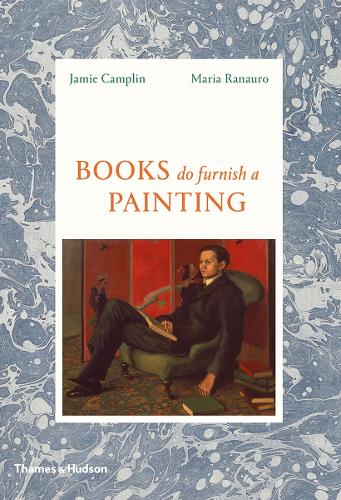
Books Do Furnish a Painting
(Hardback)
Publishing Details
Books Do Furnish a Painting
By (Author) Jamie Camplin
By (author) Maria Ranauro
Thames & Hudson Ltd
Thames & Hudson Ltd
1st September 2018
6th September 2018
United Kingdom
Classifications
General
Non Fiction
758.9002
Physical Properties
Hardback
256
Width 165mm, Height 240mm
880g
Description
What should you do at Christmas In Edvard Munch's Christmas in the Brothel, the artist depicts himself sleeping off the effects of drink, but the Madame reads a book. What links Stalin and the artist Rosso Fiorentino What was Gauguin hinting at when he painted a copy of Milton's Paradise Lost into a portrait of a friend How did a chance meeting on Unter den Linden make the young owner of The Red Book famous Was it true that no one ever saw Picasso with a book in his hand And why were the Cumberland girls reading The Fashionable Lover in Romney's commissioned portrait Thousands of fine paintings include books in their subject matter. This companionable survey first asks 'what is a book'; it explores the symbiotic relationship between the development of books and the emergence of our modern idea of the role of the artist; it parades and interprets the work of many of the greatest artists of the last five hundred years; and it explains how and why books became the single most ubiquitous feature of our cultural lives and, in large measure, of our everyday existence. These paintings connect us with centuries of lived experience: religious systems, symbols of all kinds, education, changing patterns of transport, gender roles, social status, romance, the imagination of children, literary life, sex, friendship, civilized bathing, professional competence, scientific discovery, aids to rest, aids to reflection, danger... books tell us about ourselves, and have earned their place in life - and art - through the ages.
Reviews
'A fascinating look at the ways in which artists have sought to communicate, entertain and intrigue their audience through the inclusion of books in their paintings' - History Today
'The authors pooled expertise in history, art and publishing inform this sweeping exploration of that treasured human possession, the book a fascinating work, by its very nature gorgeous' - Saga
'A scenic wander through what turns out to be rather more than a byway of art history' - Art Book Review
'A beautiful book which acknowledges how art and literature both define us and make commentary on us as civilized beings' - Book Murmuration
'Charming our interactions with books during the last 500 years are more symbolic than we might think, and are therefore unlikely to be completely replaced' - Mr Porter
'Essential reading for anyone wishing to understand the long, interwoven histories of paintings and books' - .Cent magazine
'Fascinating a book full of surprises' - Shiny New Books
'Academically thorough' - The Times, Art Books of the Year
'Gorgeously illustrated ... Buy six copies and declare your Christmas shopping over' - Literary Review
'Dark winter evenings have been lit up here in Oxford by this intricate work of great subtlety, strangeness, and delight. Ive been stopped in my tracks by thought-provoking turns in the text' - Alexandra Harris, author of 'Romantic Moderns'
Author Bio
Jamie Camplin graduated from Cambridge in 1968 with a Double First in History. He was Editorial Director, Thames & Hudson, 1979-2005, and Managing Director, 2005-13. He is the author of The Rise of the Plutocrats: Wealth and Power in Edwardian England (1978) and 1914 The King Must Die (2015). According to bestselling biographer Michael Holroyd, in The Times, he writes with 'skill and a wry romantic wit. I can see he is playing brilliantly.'
Maria Ranauro studied art history at the Courtauld Institute. After taking her MA in 2005, she worked in the publishing department at the National Gallery, London, and was responsible for the visual content of a number of seminal exhibition catalogues. She is now Senior Picture Researcher at Thames & Hudson and in January 2016 won the Longman-History Today Picture Researcher of the Year Award.
